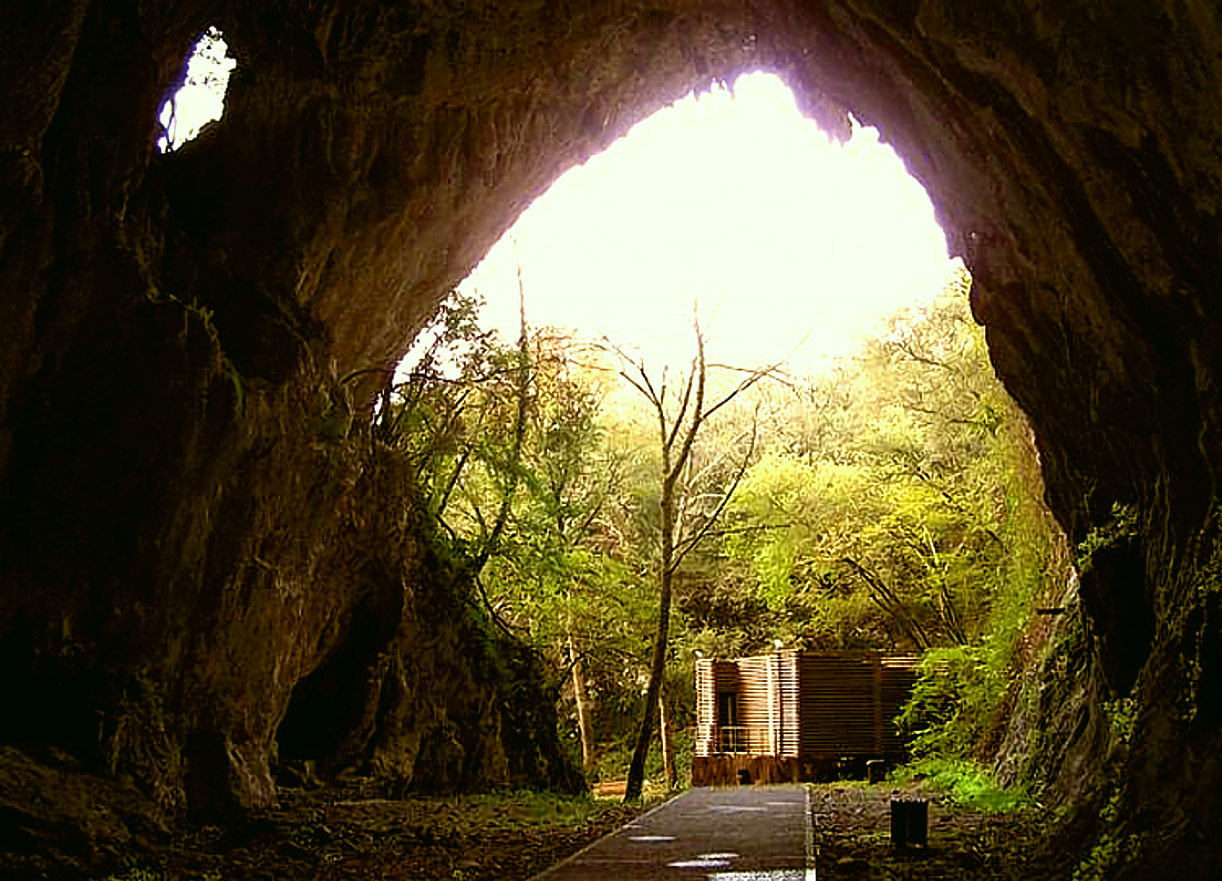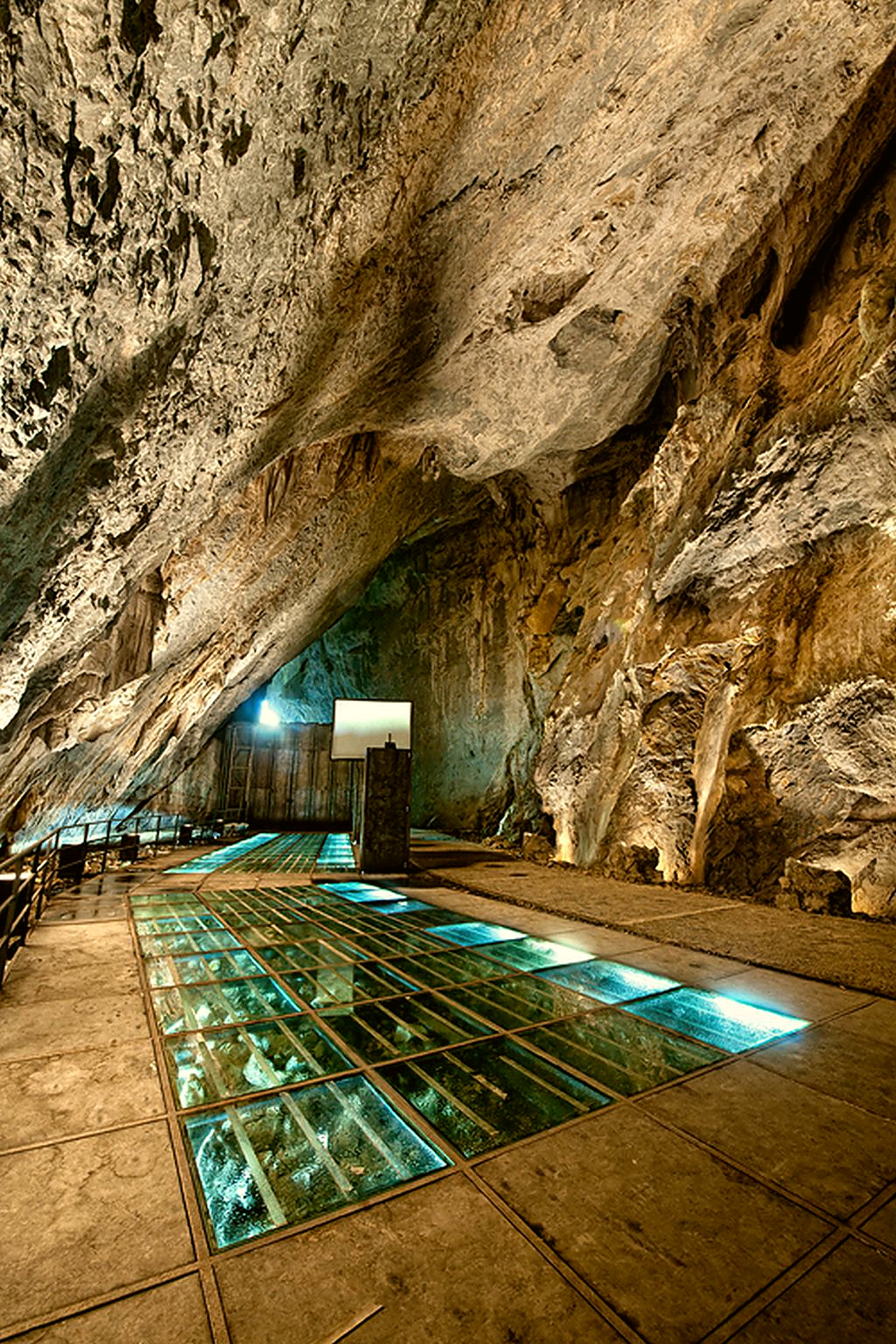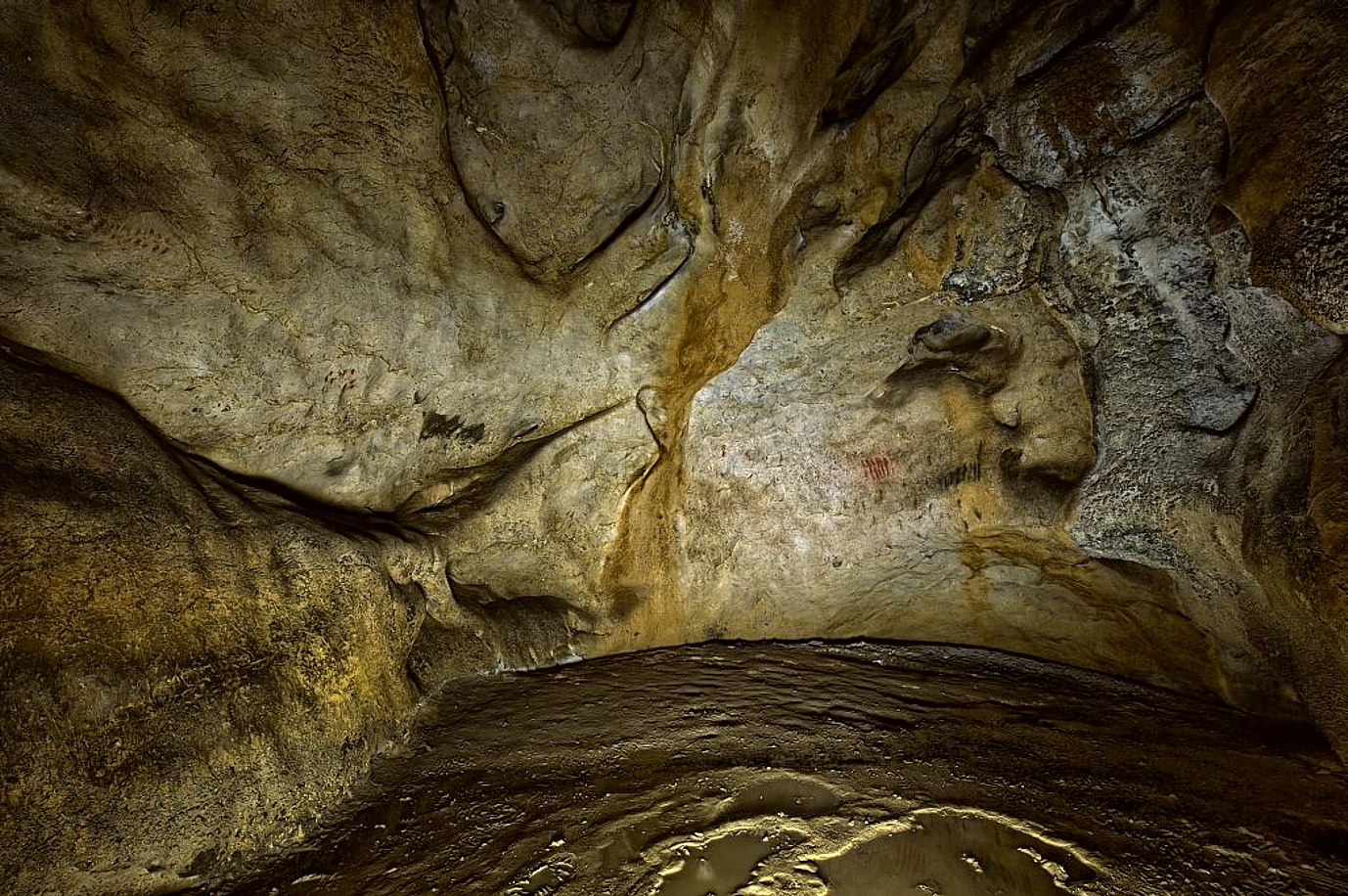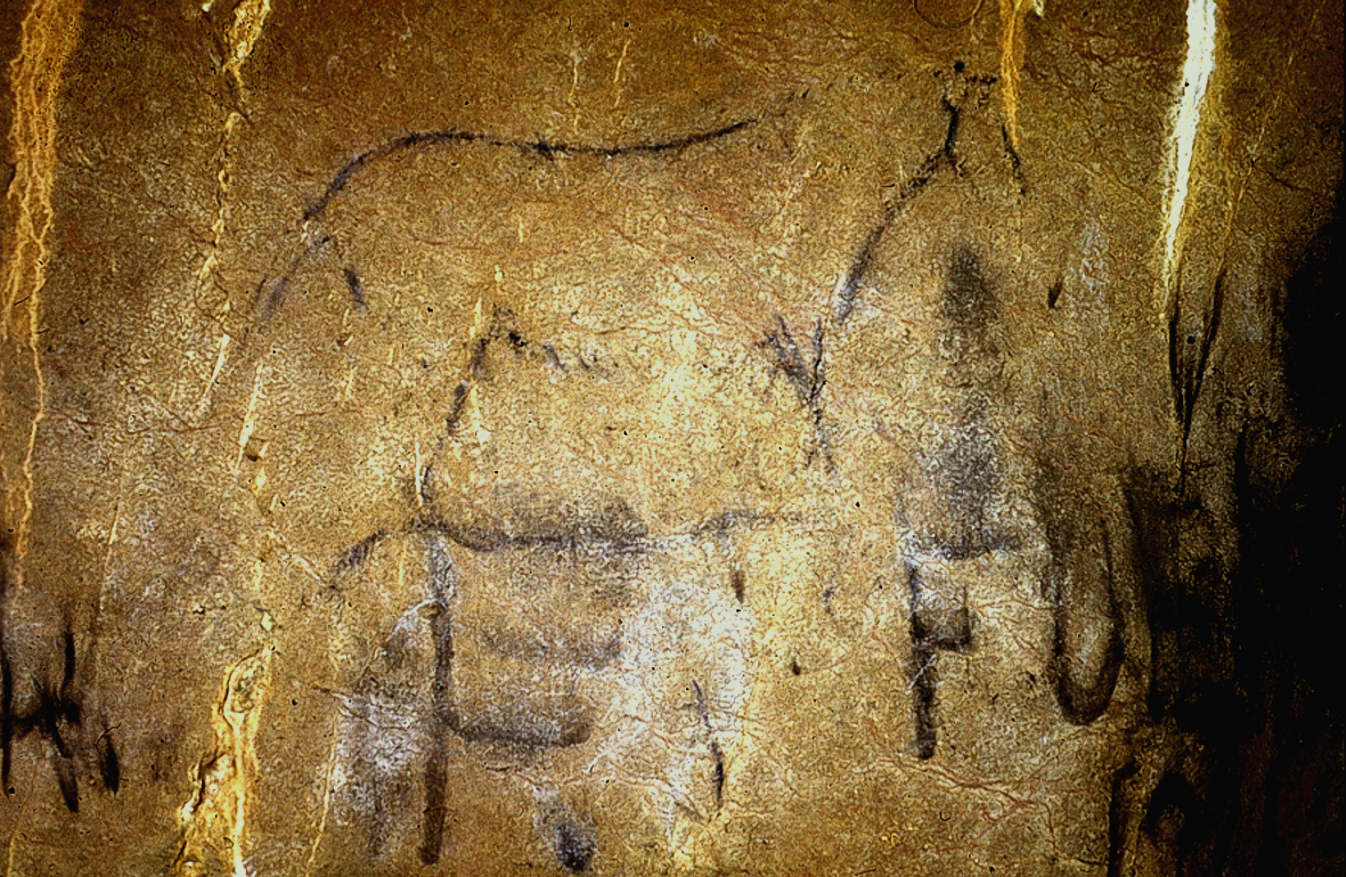Age of the artistic representations: Gravettian and Magdalenian (26,000-12,000 years ago).
General description of the destination: Cullalvera has the deepest group of rock art in northern Spain, with a series of figures over a kilometre from the cave’s huge entrance. The main figures are horses painted in black, black lines, claviforms and red dots. In the entrance area a few signs and a horse’s head have been identified, all in red. Visitors see the first 350m of this huge cave, but it is not possible for them to view the paintings directly. They are shown in an audiovisual display. Cullalvera is a large cave with a spectacular entrance from which a strong cold draught blows. The inside of the cave has a walkway and is suitable for disabled visitors. The visit begins with an audiovisual presentation describing aspects of the landscape, heritage and economy of the Asón Valley in general and of Ramales de la Victoria in particular. Once the visit is underway, a spectacle of lights, sound and water introduces the visitors to the history of the cave, from prehistory, when the first Homo sapiens lived in the entrance and painted animals and signs several hundred metres inside the cave, to the Spanish Civil War, when the cave was used to park vehicles. Legends and history surround Cullalvera Cave.
History of the site: The site forms part of a cave system about 12 kilometres long, where the action of water on the rock has formed a massive underground passage. The rock art was discovered in the 1950s and studied by J. Carballo and J. González Echegaray. When the site was being developed as a show-cave, red figures, especially a horse’s head, were discovered near the entrance, where some red paintings were already known.
Museographic resources description: There is a small reception building outside the cave.











